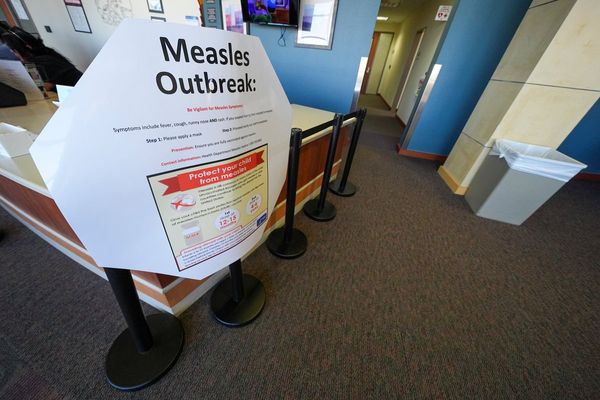President Joe Biden’s plan to address the issue of crushing student debt by forgiving loans — with the benefit capped at $20,000 for low income borrowers — is another example of the federal government providing financial relief to help people address a fiscal crisis.
To consider: When the COVID-19 pandemic destroyed the economy, eligible low-and-middle-income individuals got thousands of dollars in no-strings attached stimulus checks, with the first money delivered in 2020 under former President Donald Trump. Another Trump program used by companies and non-profits — the Paycheck Protection Program — provided loans that were mostly forgiven, benefiting people no matter their incomes.
Labor Secretary Marty Walsh, in Chicago for several events, told the Chicago Sun-Times that easing student debt will allow a greater career choice for some, if the pressure of high monthly payments is reduced.
Noting that some people pursue careers out of their fields to get higher salaries to pay student loans, Biden’s student loan relief package means “there’s going to be an opportunity for them to go into maybe the profession they went to school for.”
Here are some highlights of Biden’s student loan relief plan announced on Wednesday:
- Borrowers who paid for their undergraduate tuition in part or in whole with Pell Grants — who have individual adjusted gross incomes below $125,000, or not more than $250,000 for married couples — will get up to $20,000 in debt canceled if they have loans held by the U.S. Department of Education.
- Borrowers who do not have Pell Grants — but meet the above income requirements — will be eligible to apply for up to $10,000 in debt cancellation.
- The aim of the program is to help borrowers who come from low- and middle-income backgrounds — that’s why there is an emphasis on helping people with Pell Grants. Securing a Pell Grant depends, in part, on how much a family can contribute to an education. Most Pell Grant recipients come from families earning less than $60,000, with 66% of the students who get Pell Grants coming from families earning less than $30,000.
- The current pause on federal loan repayments — which began during the COVID-19 pandemic — has been extended through Dec. 31. The extended time will kick in automatically. Payments are to resume in January.
- The White House said no high-income individual or household — that is, the top 5% of incomes — will get any breaks from this debt cancellation program. The Education Department estimates that 90% of the debt cancellation benefits will go to individuals who earn less than $75,000.
- According to a White House senior official, the impact of student debt falls disproportionately on Black borrowers. The official said in a Wednesday briefing that one analysis showed that Black borrowers still owe 95% of their original student loan debt 20 years after taking on the loans. An Urban Institute study cited by the White House found “that debt forgiveness programs targeting those who received Pell Grants while in college will advance racial equity.”
- The Department of Education estimates, when it comes to age, that 21% of the borrowers impacted by this debt cancellation will be 25 or younger and 44% will be between the ages of 26 and 39. About 5% of the borrowers eligible for the break will be senior citizens.
- According to an Education Department official, the loan forgiveness announced Wednesday is a one-time program for borrowers. It covers people whose loans originated before July 1, 2022. Details on how to apply will be announced by the Education Department in the coming days or weeks.
- For students taking out loans in the future, the department is proposing revising rules so income-driven repayments are cut in half, from 10% to 5% of discretionary income. The department also wants to shield more income from being considered discretionary in order to keep the monthly payments low so no one is overly burdened by student loan debt going forward.
- And for people who have been carrying balances for years, the Biden administration is asking the Education Department to change the rules so that a loan is forgiven after 10 years of payments instead of the current 20 years, for borrowers who owe $12,000 or less.
- It is not clear yet what loan relief, if any, will be provided to borrowers with private loans, the Education Department official said.
- Sen. Dick Durbin, D-Ill., who has worked for years against predatory for-profit schools who exploit Pell Grant students — and who has pushed to allow student debt to be wiped out in most bankruptcy proceedings — said on average, Illinois students owe $38,526 after graduation.
Said Durbin, “Tens of millions of Americans are plagued by student loan debt in pursuit of a quality education. Today’s announcement by President Biden is a crucial step to enable low- and middle-income borrowers — especially communities of color — to eliminate their debt so they can buy a home, start a business, save for emergencies and fully participate in our economy. President Biden and Congressional Democrats are delivering on our promises and focused on lifting up working families and the economy.”







